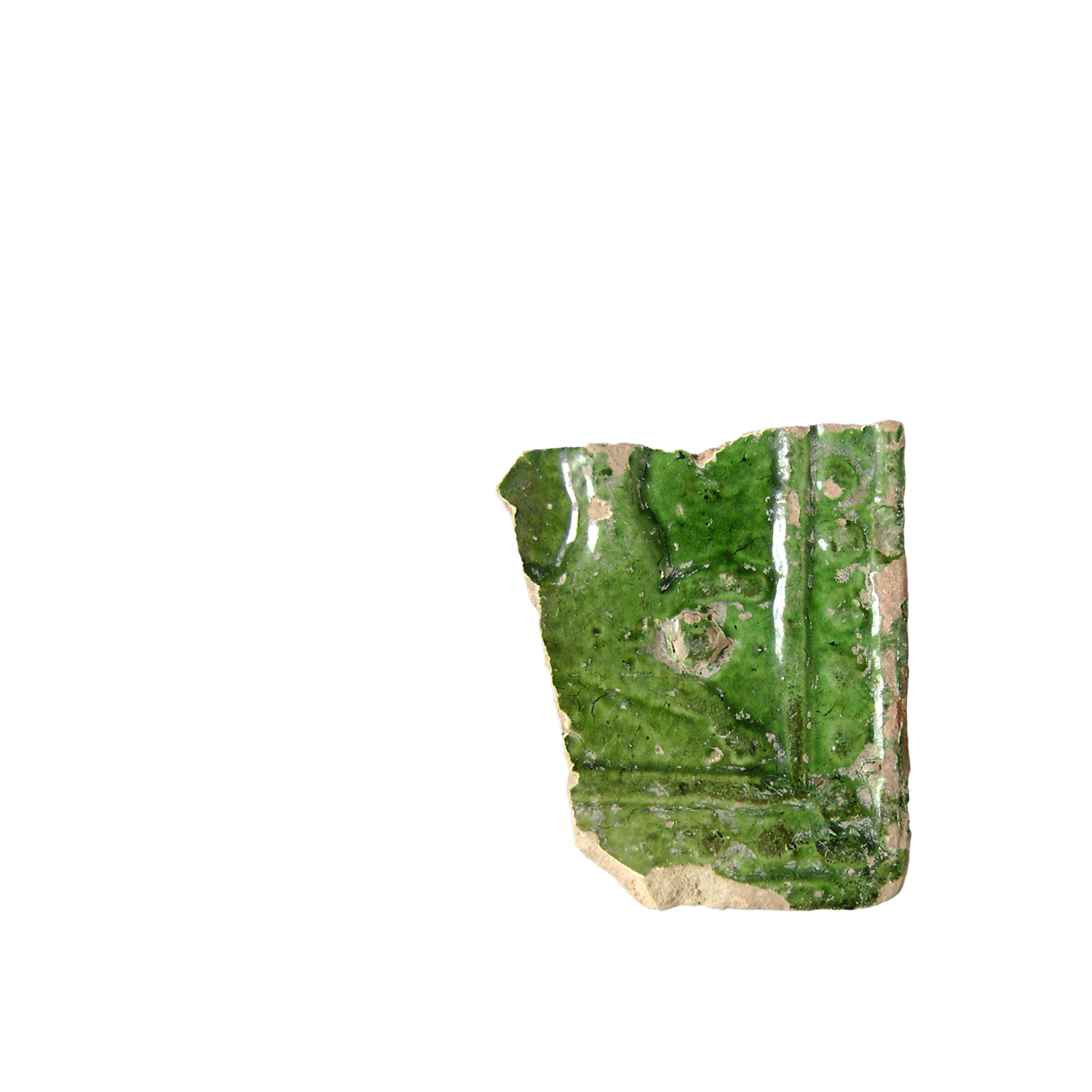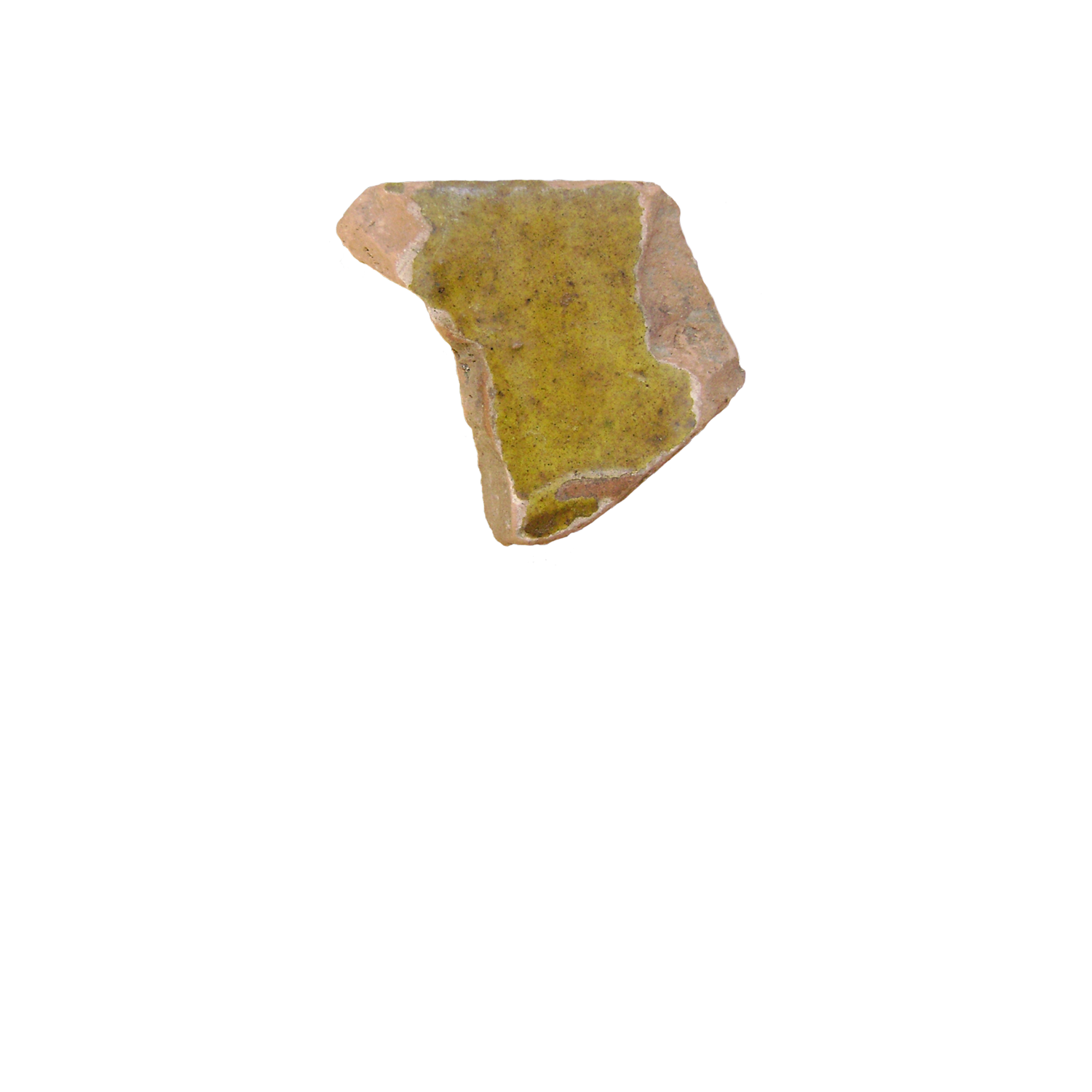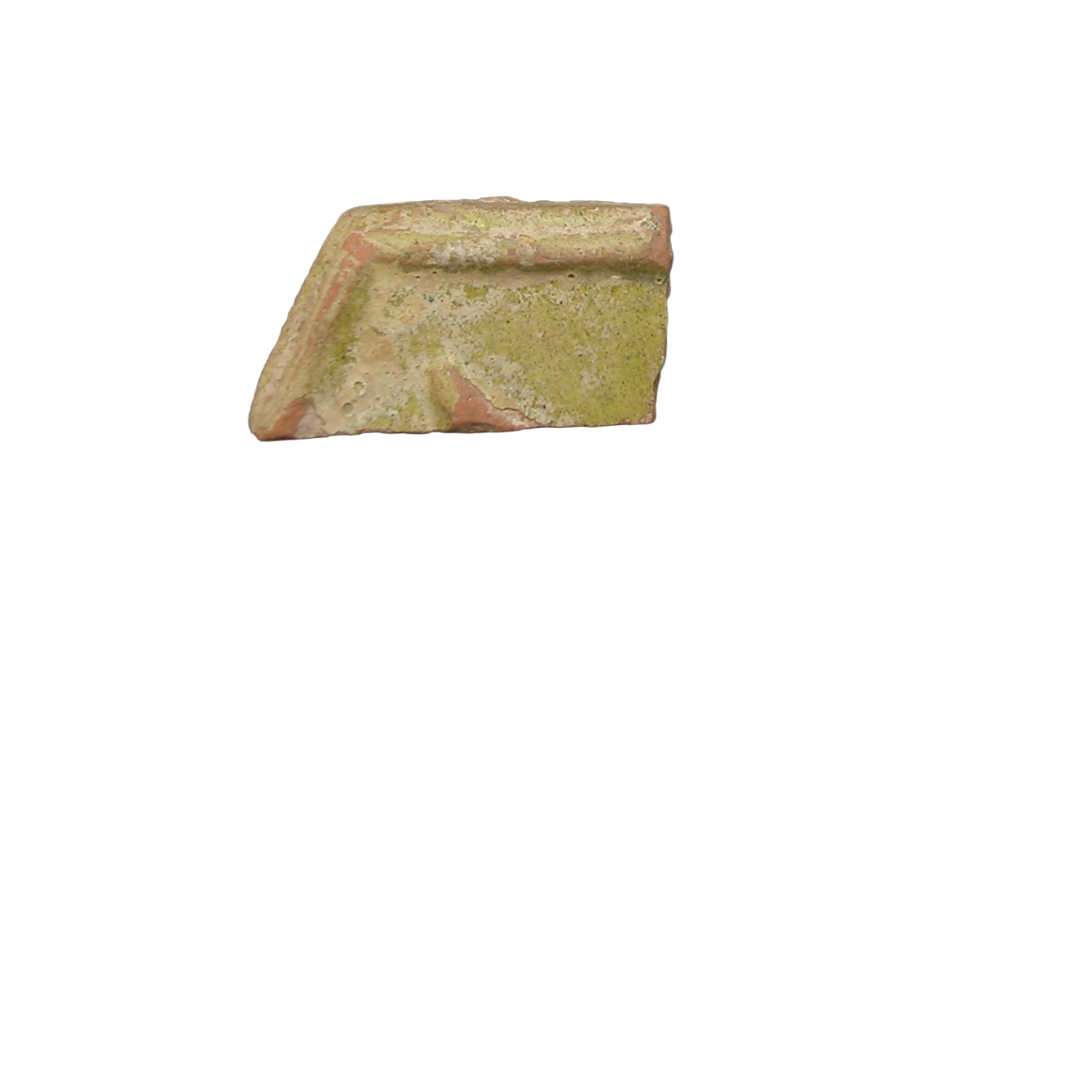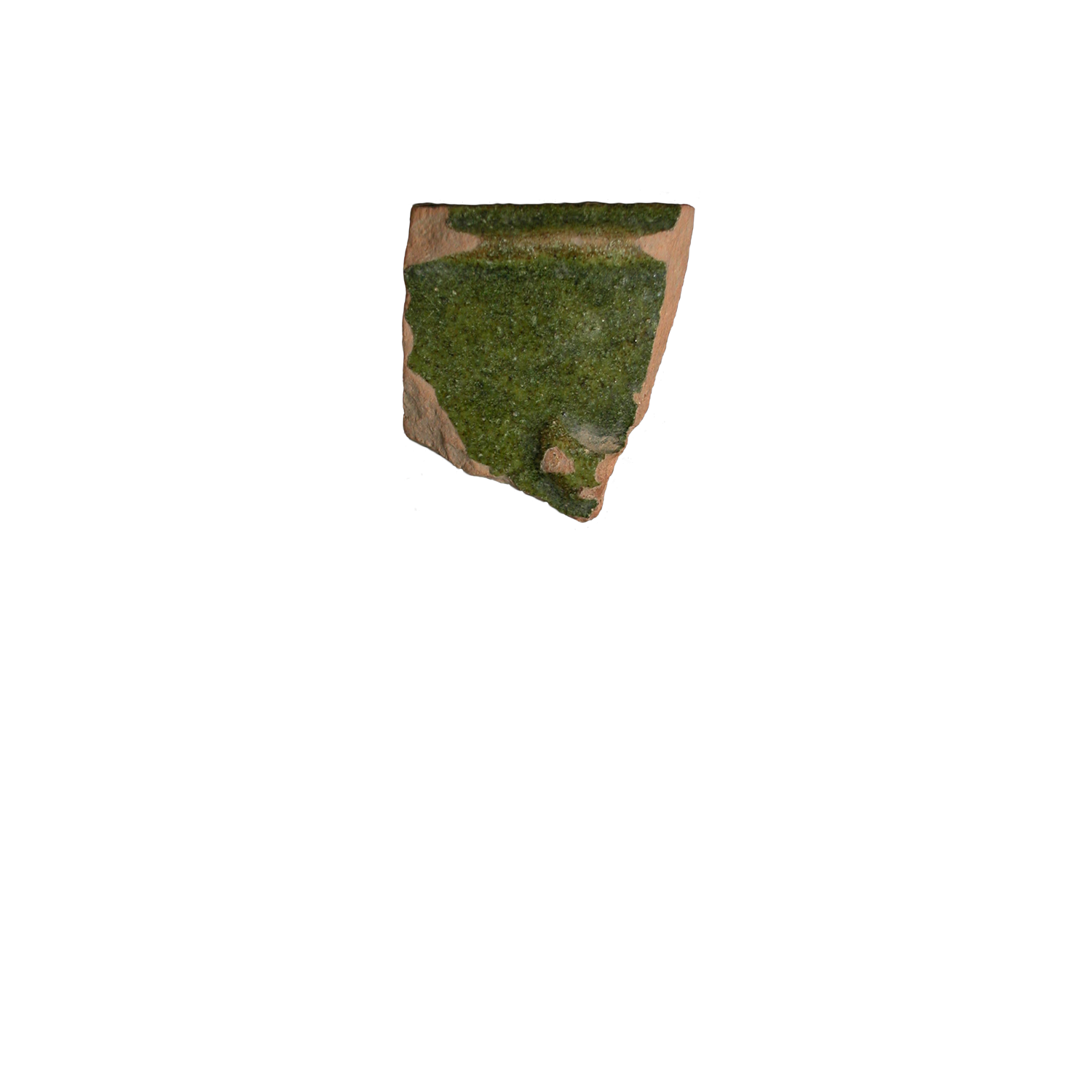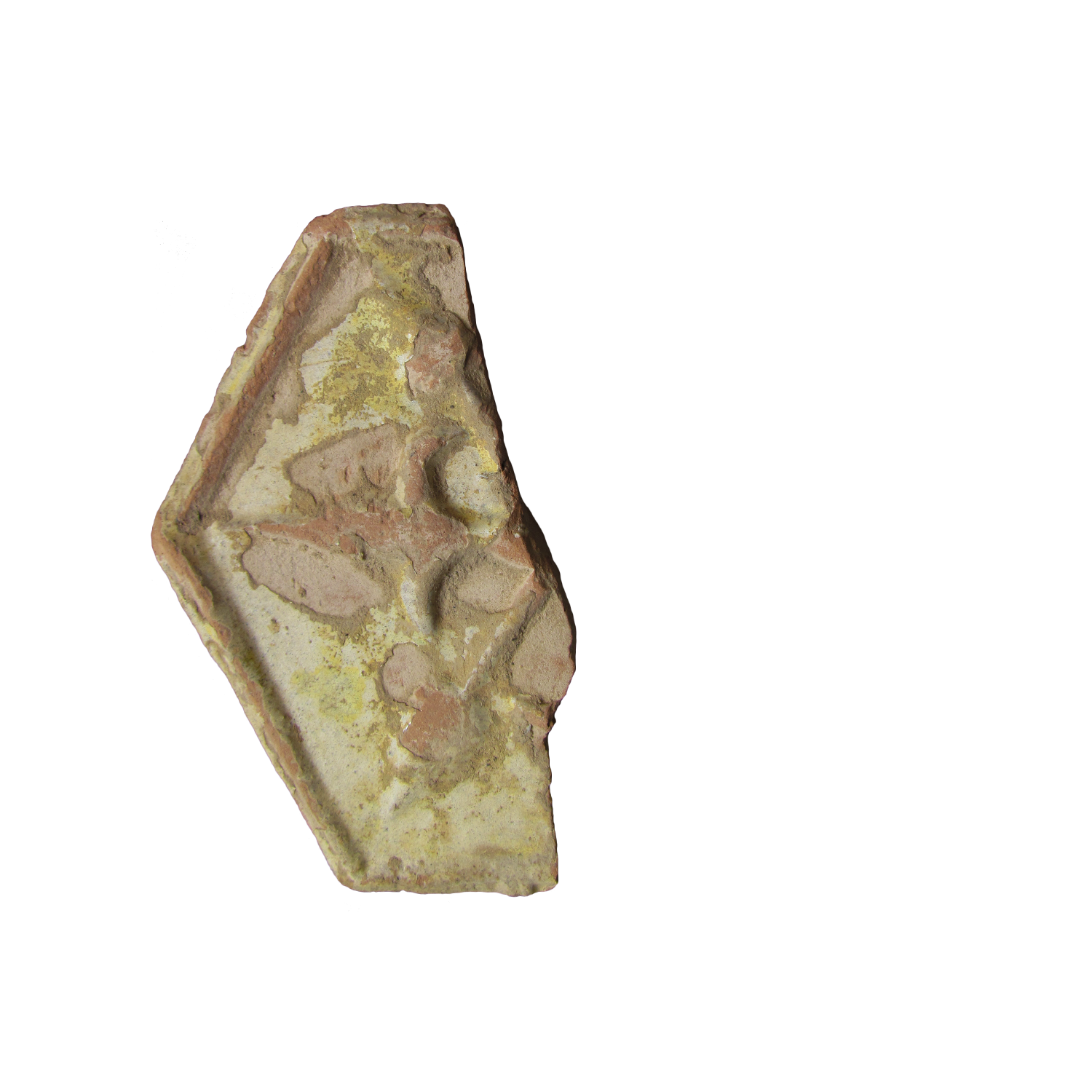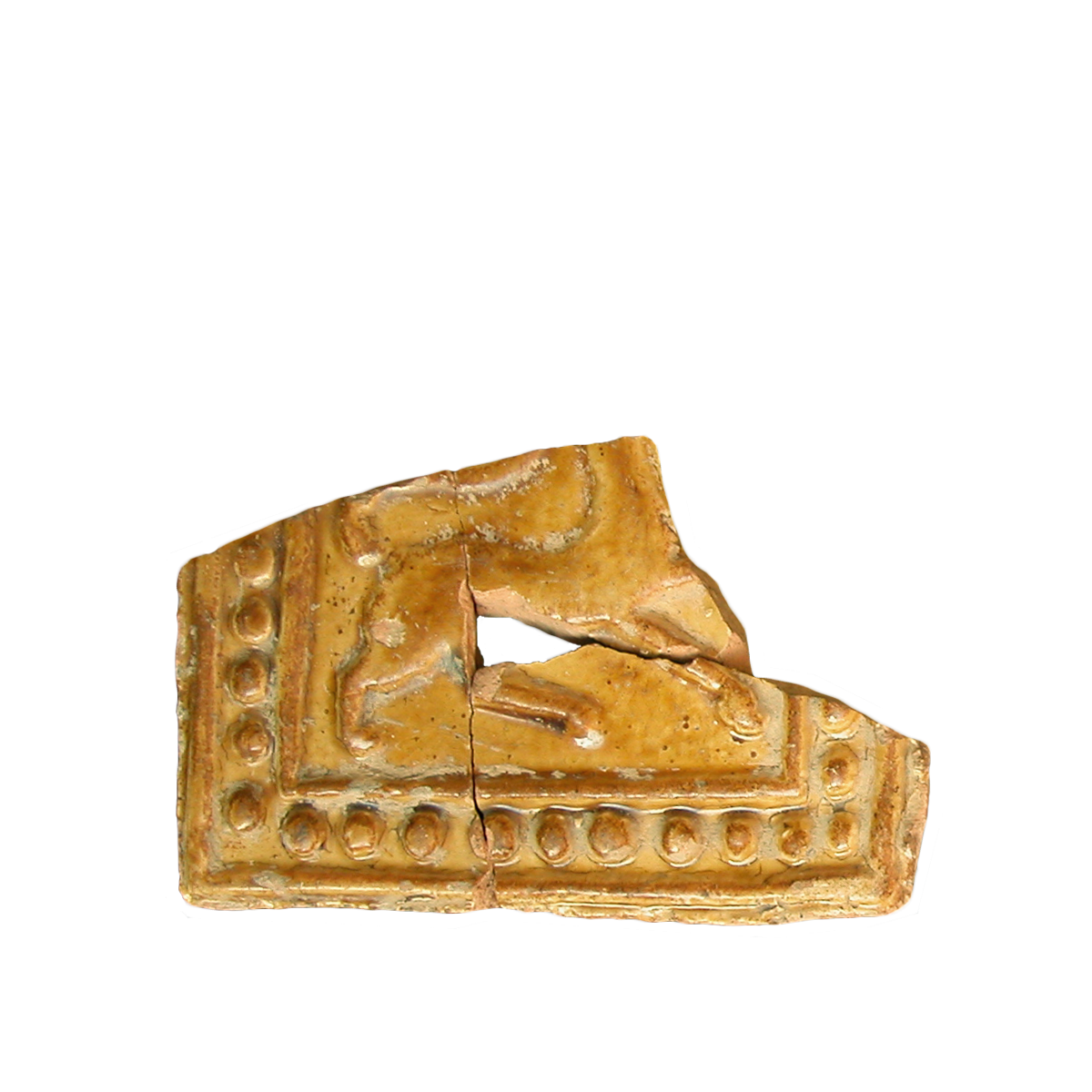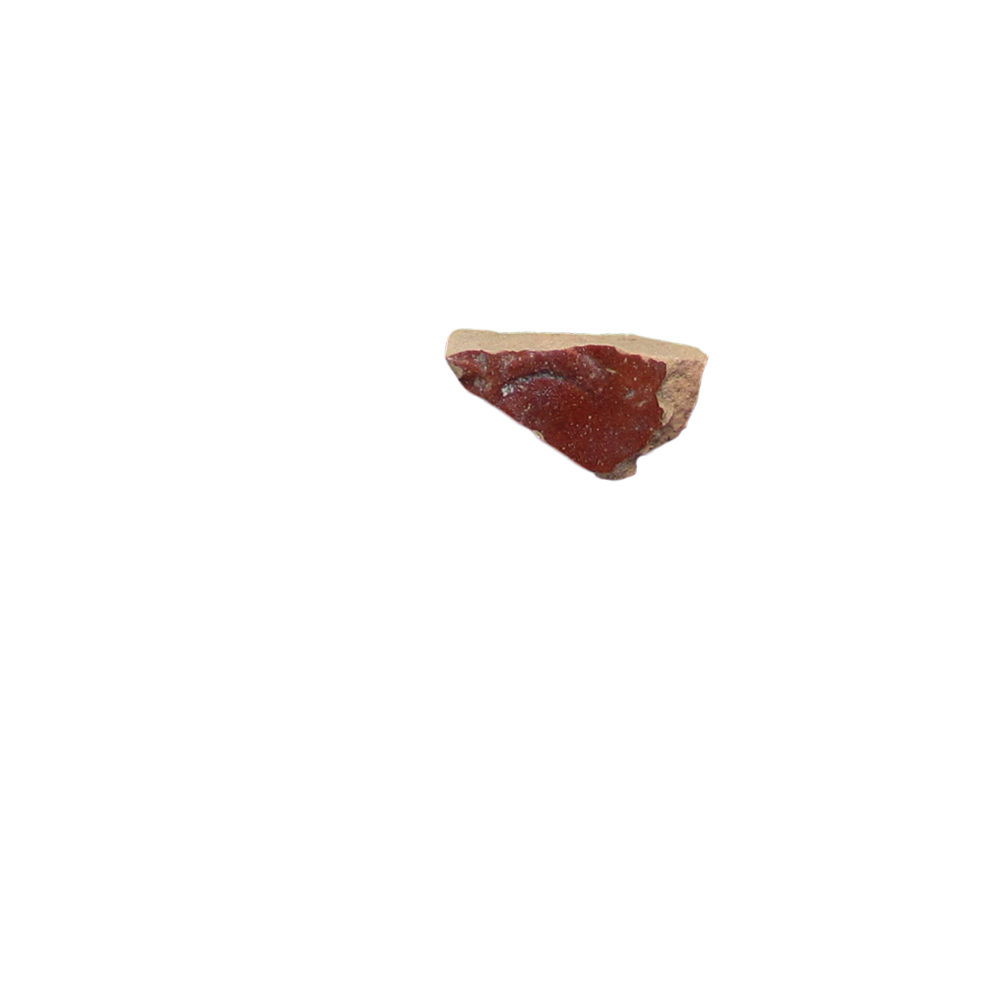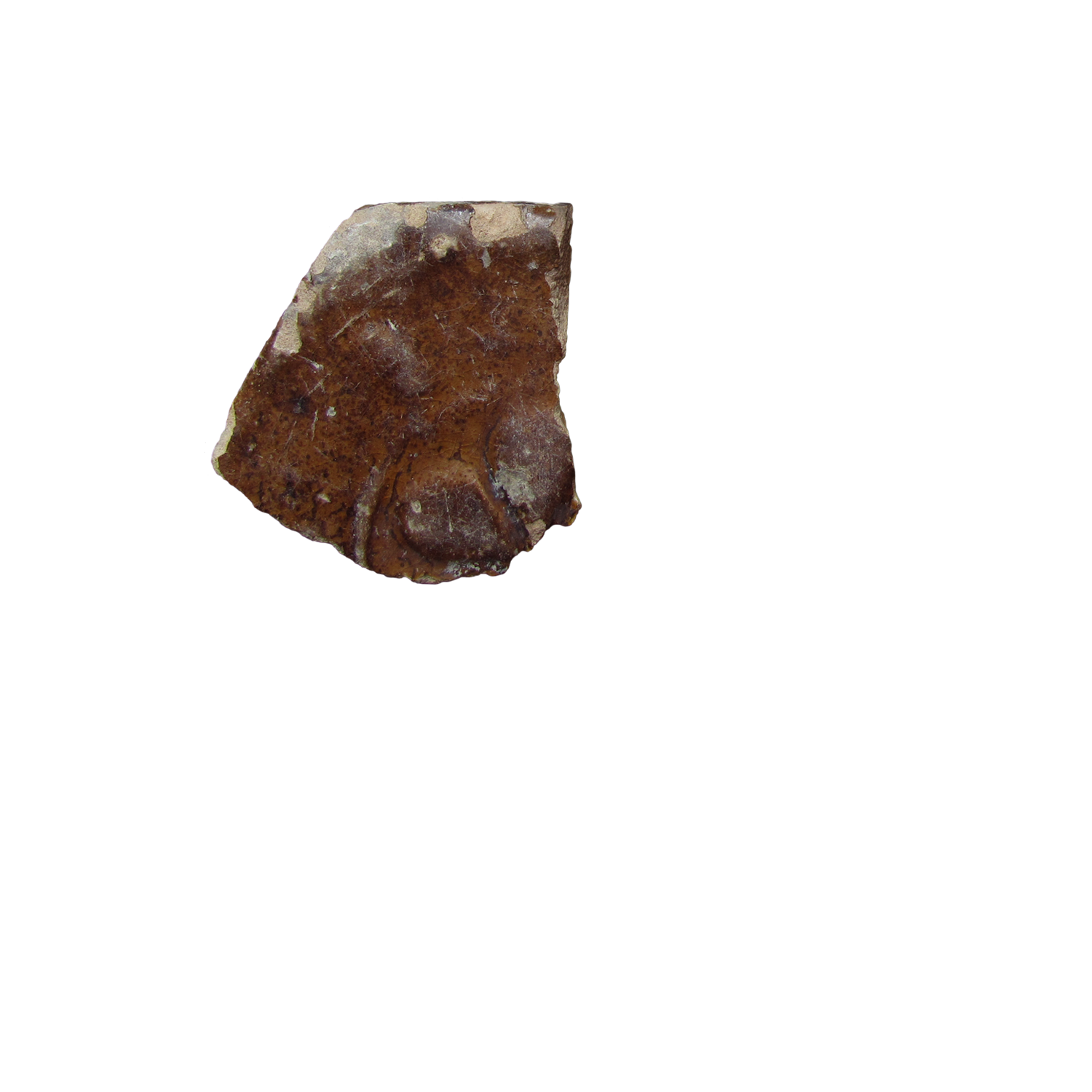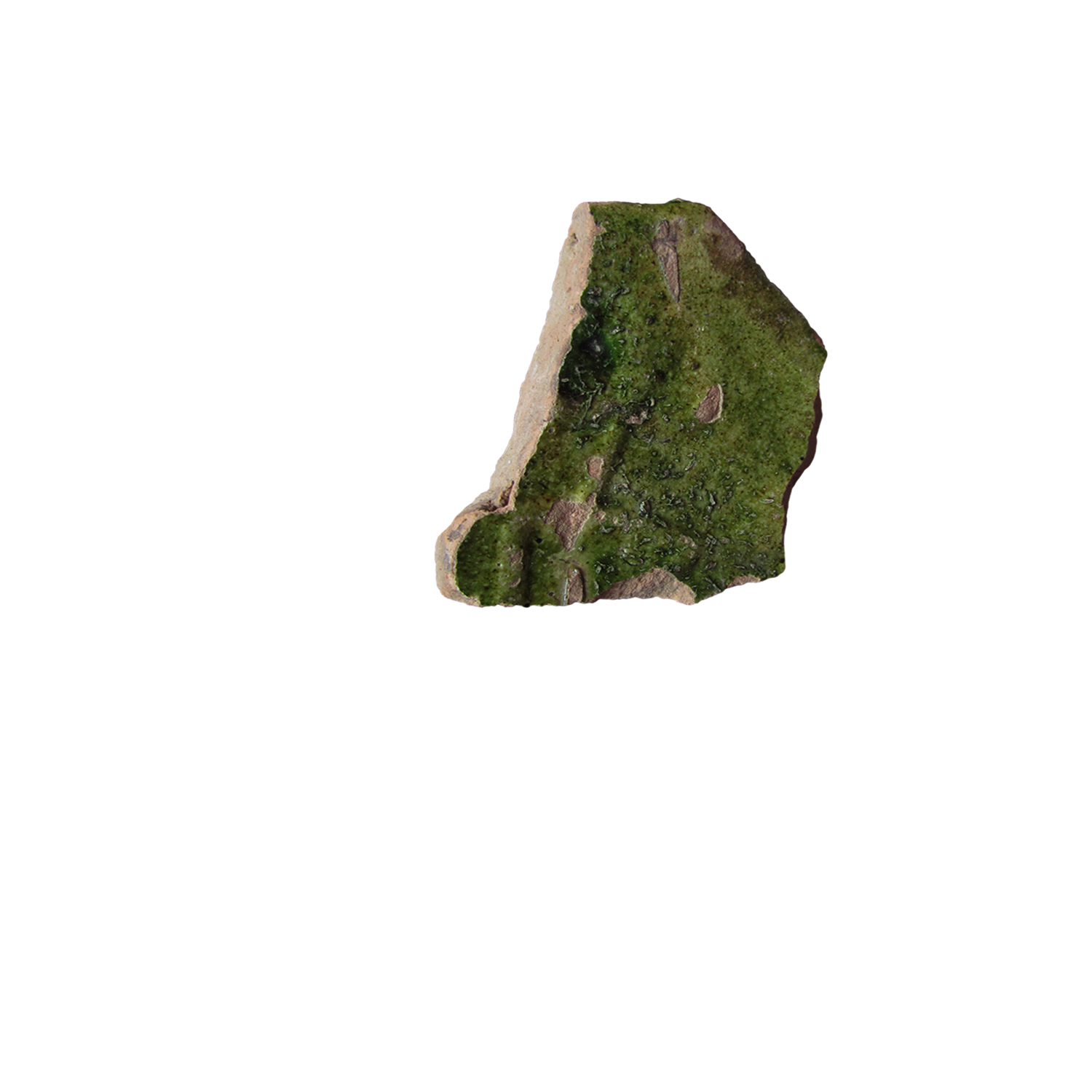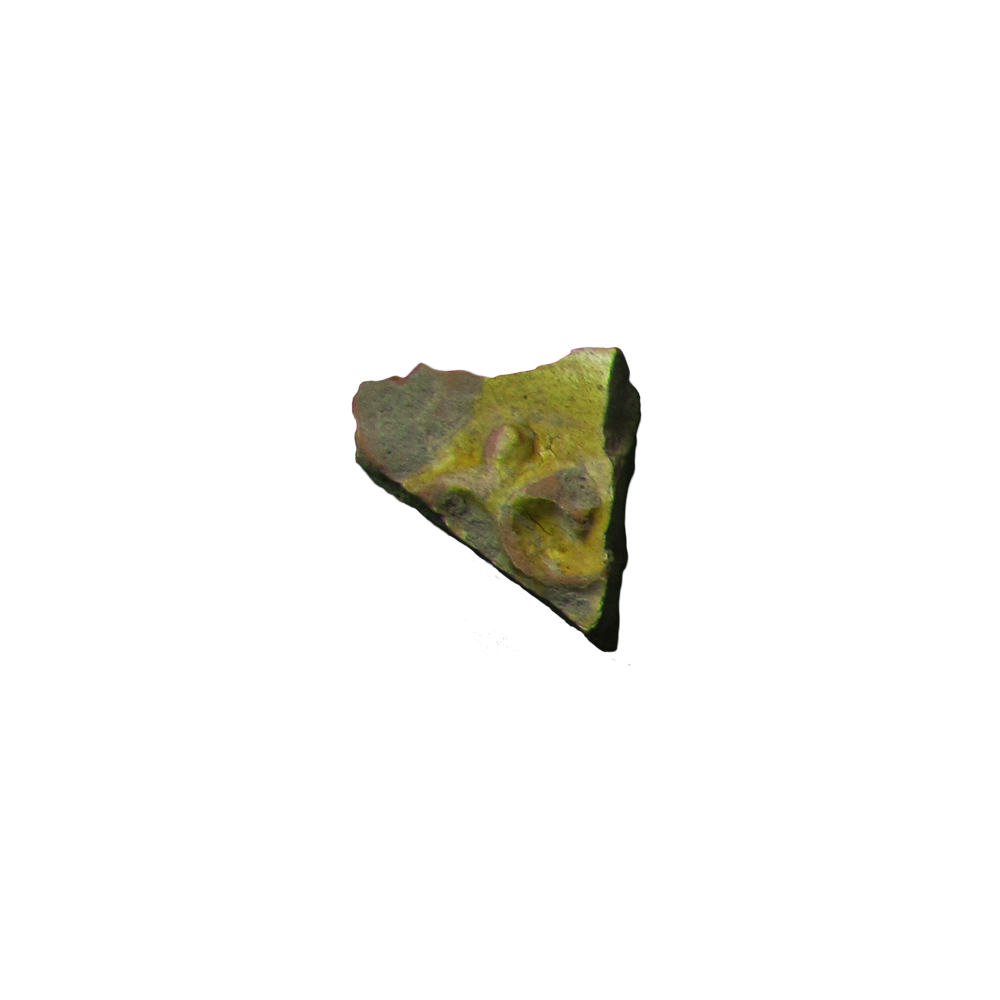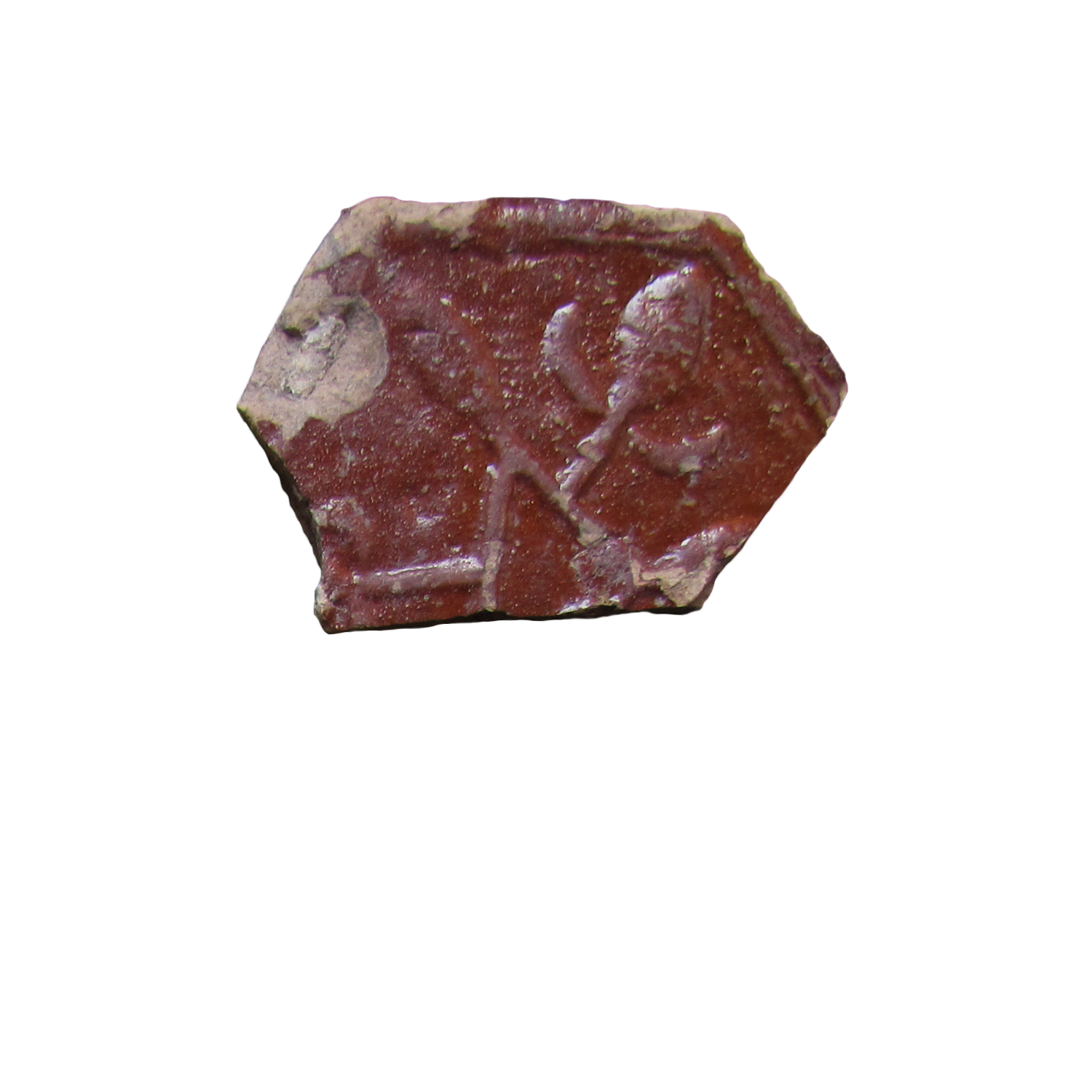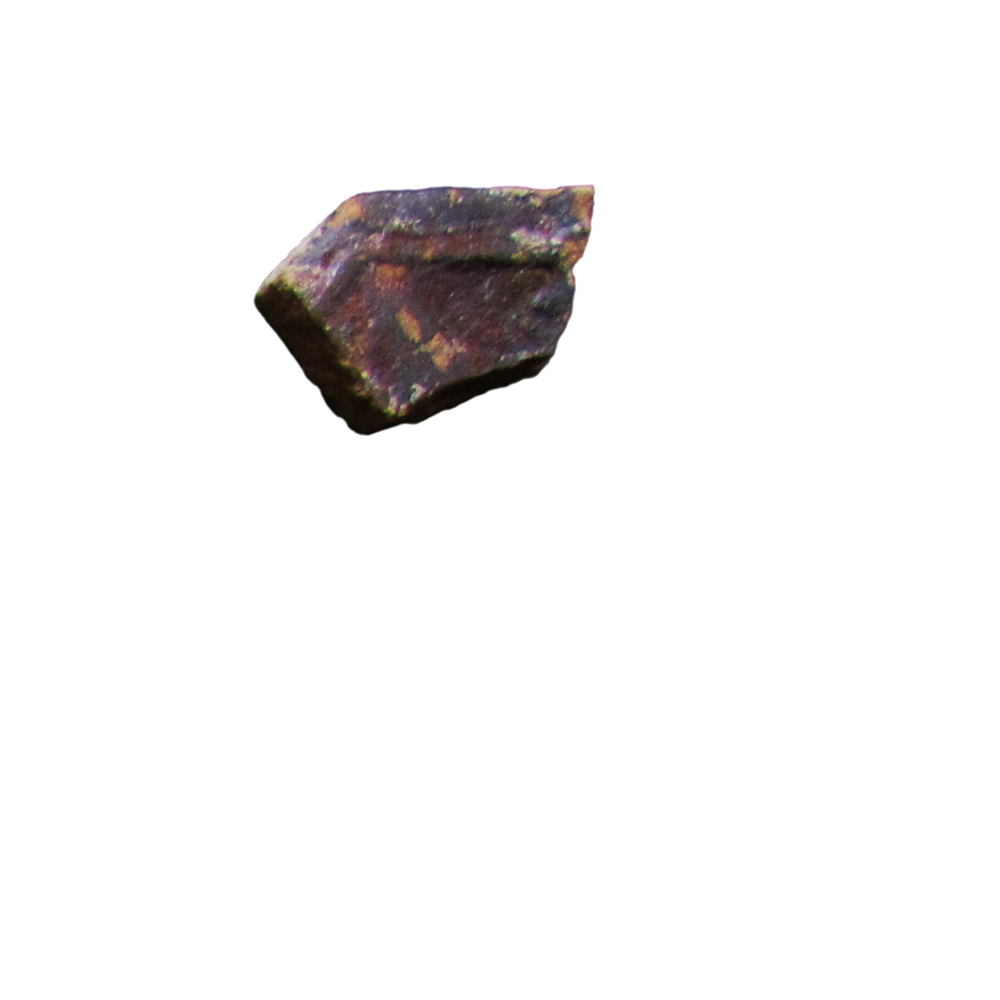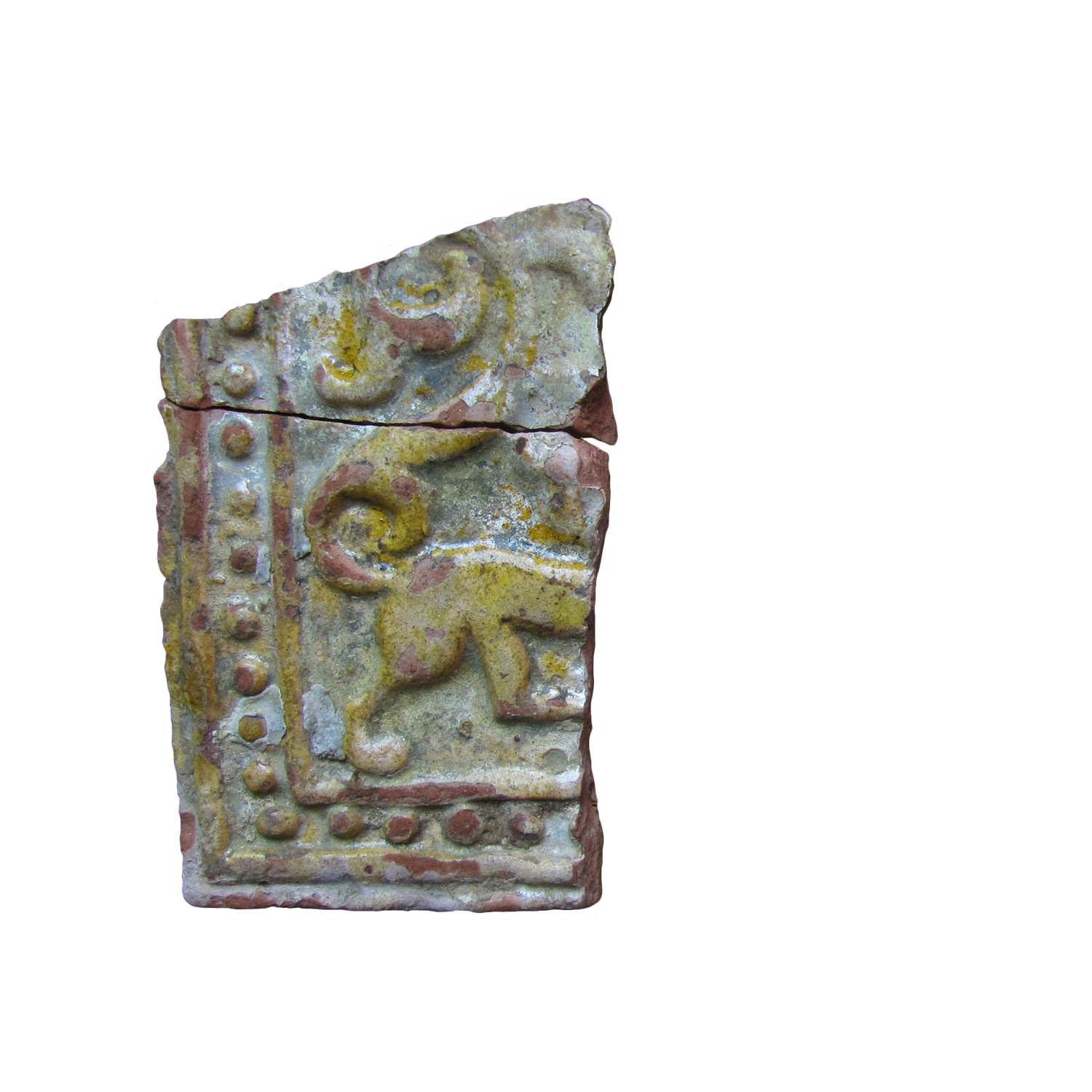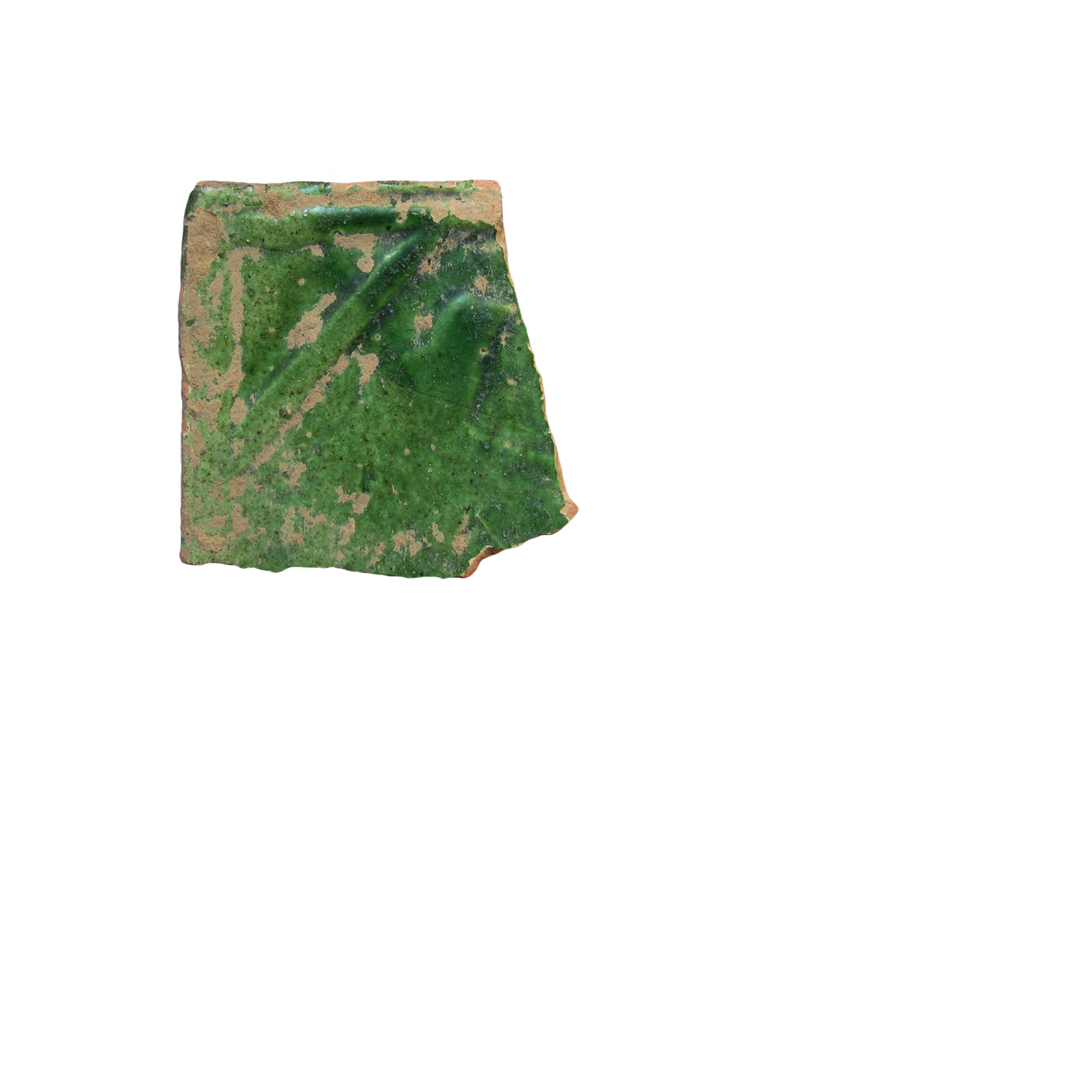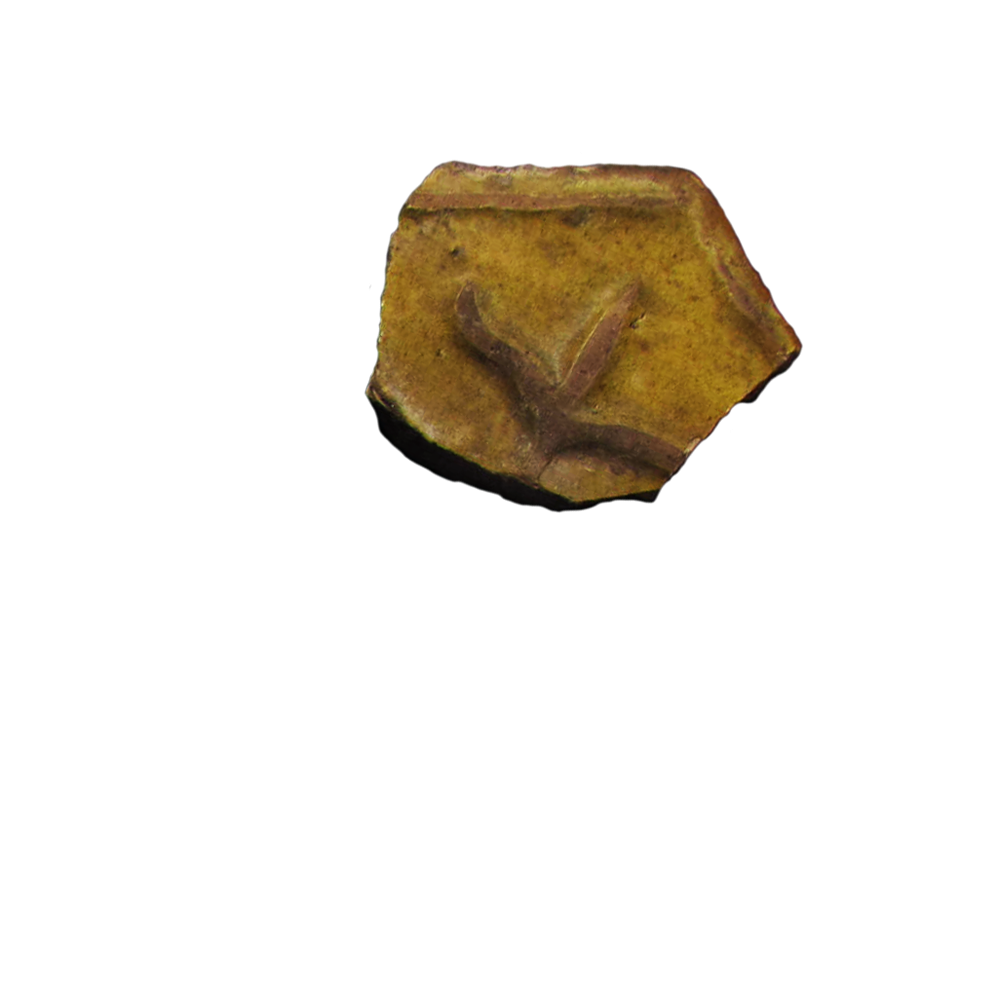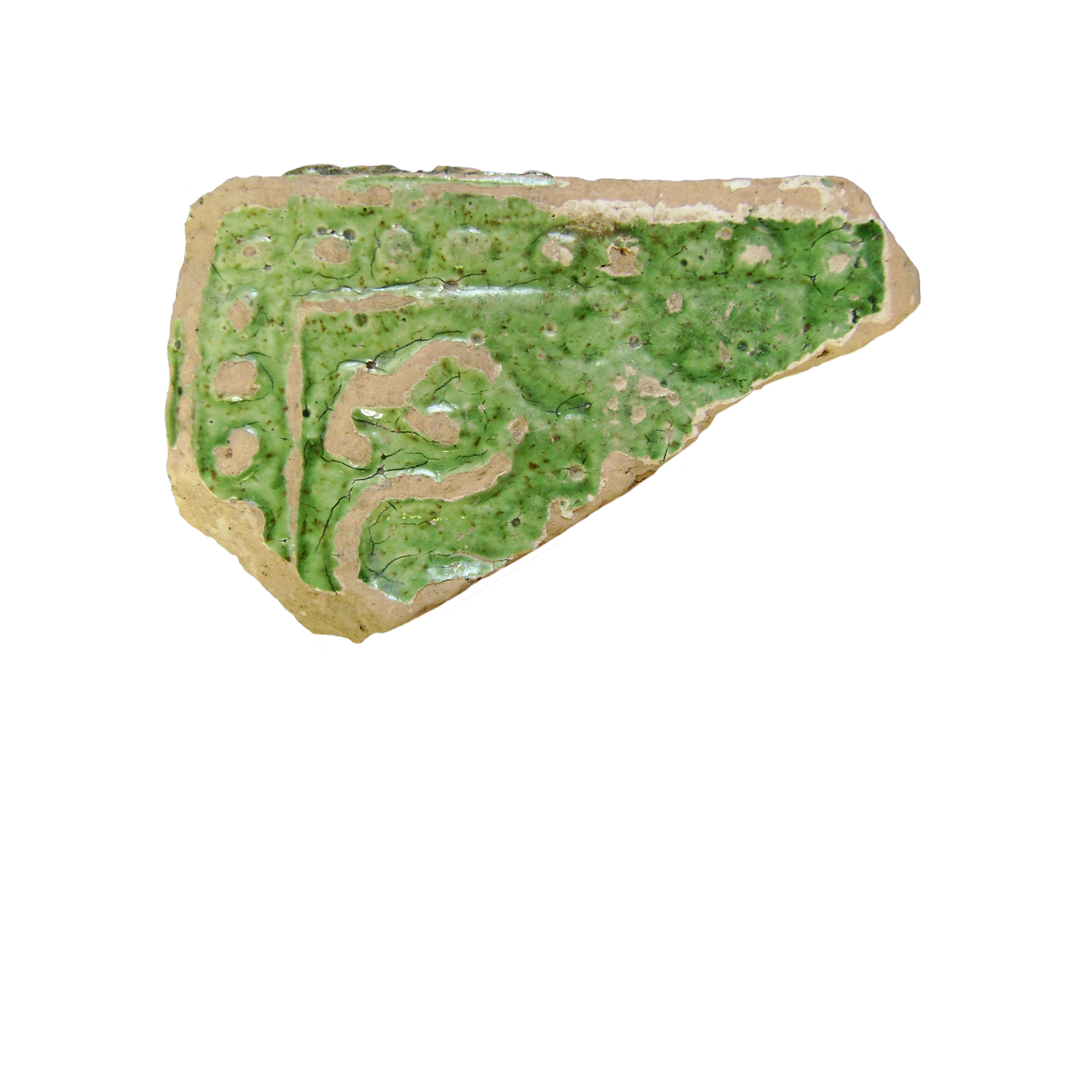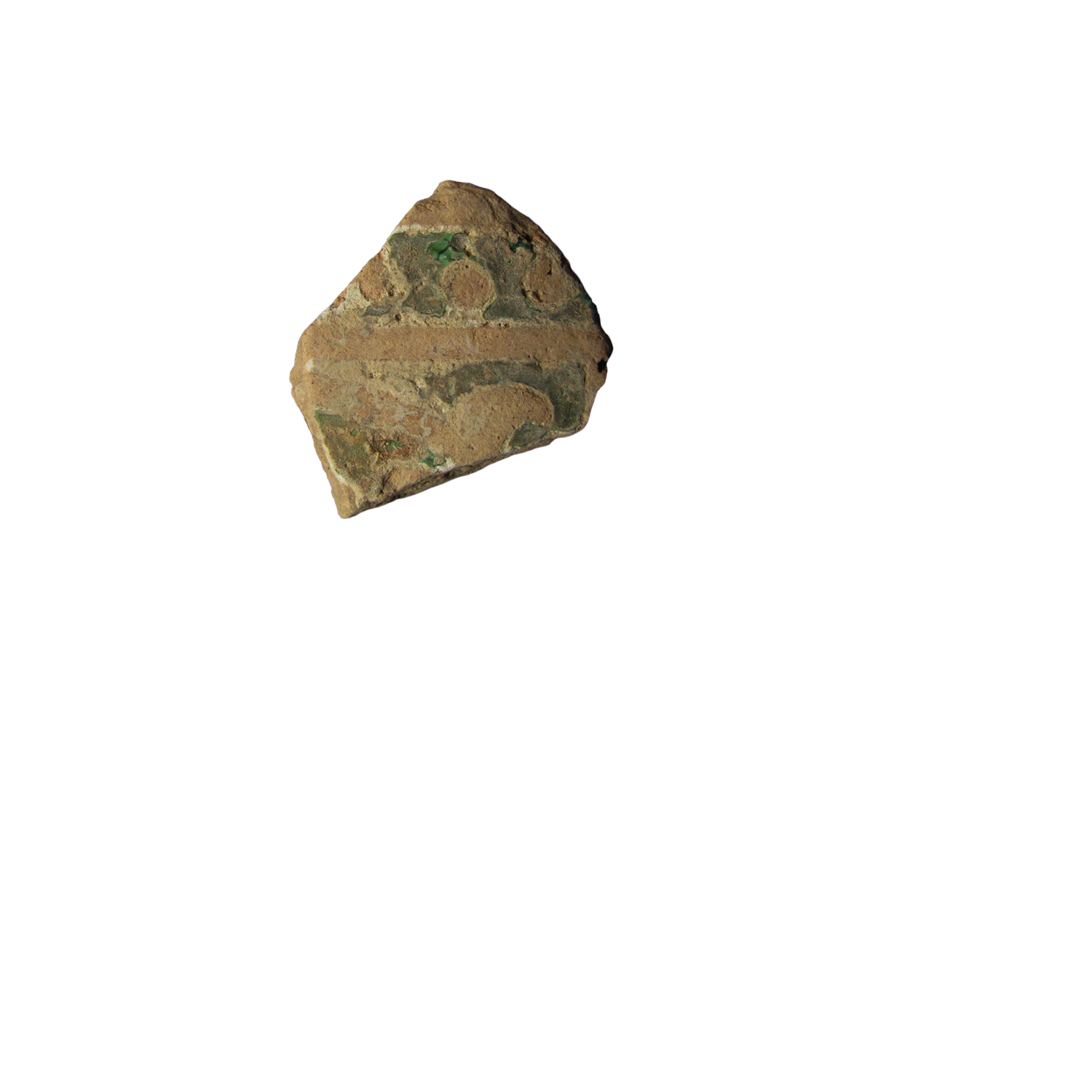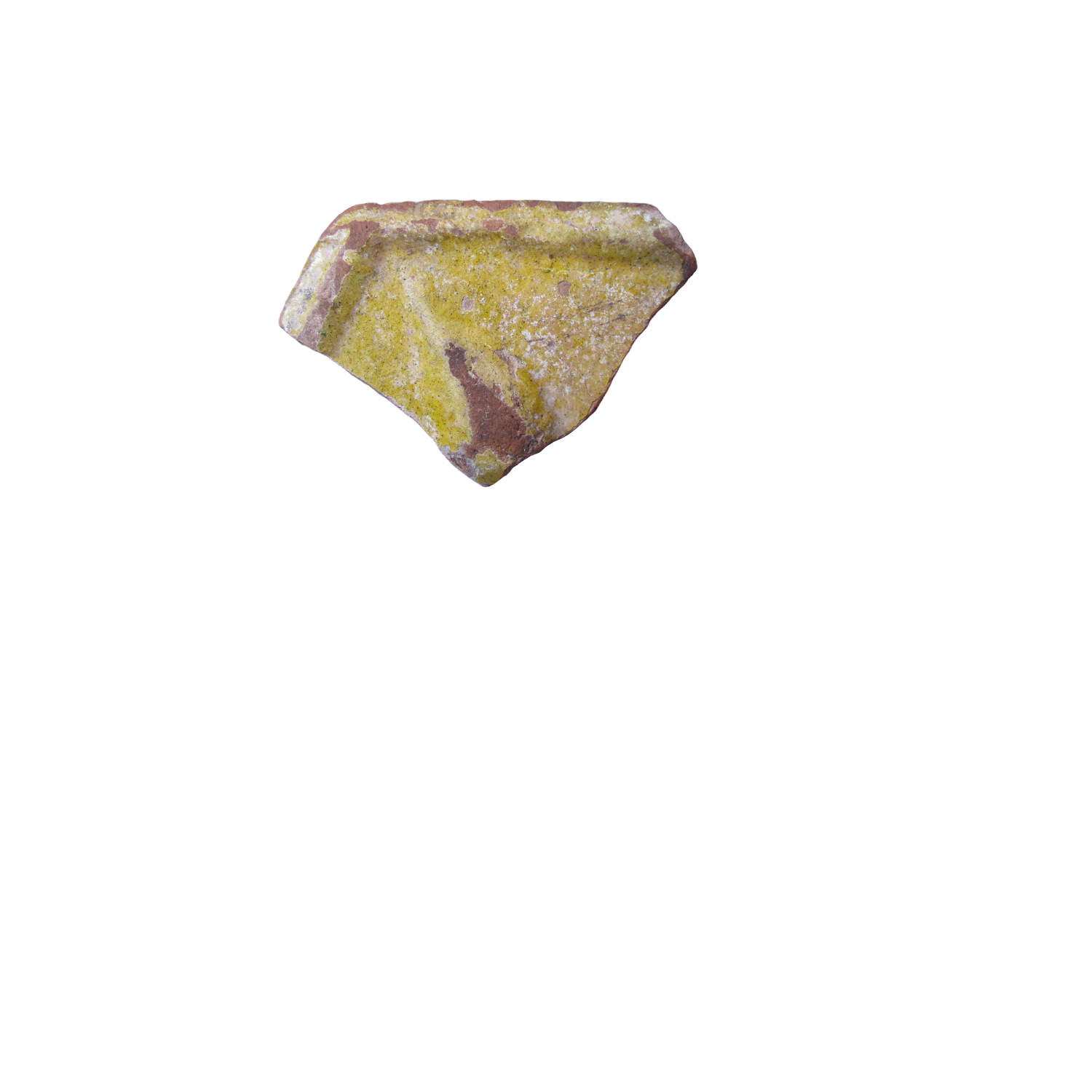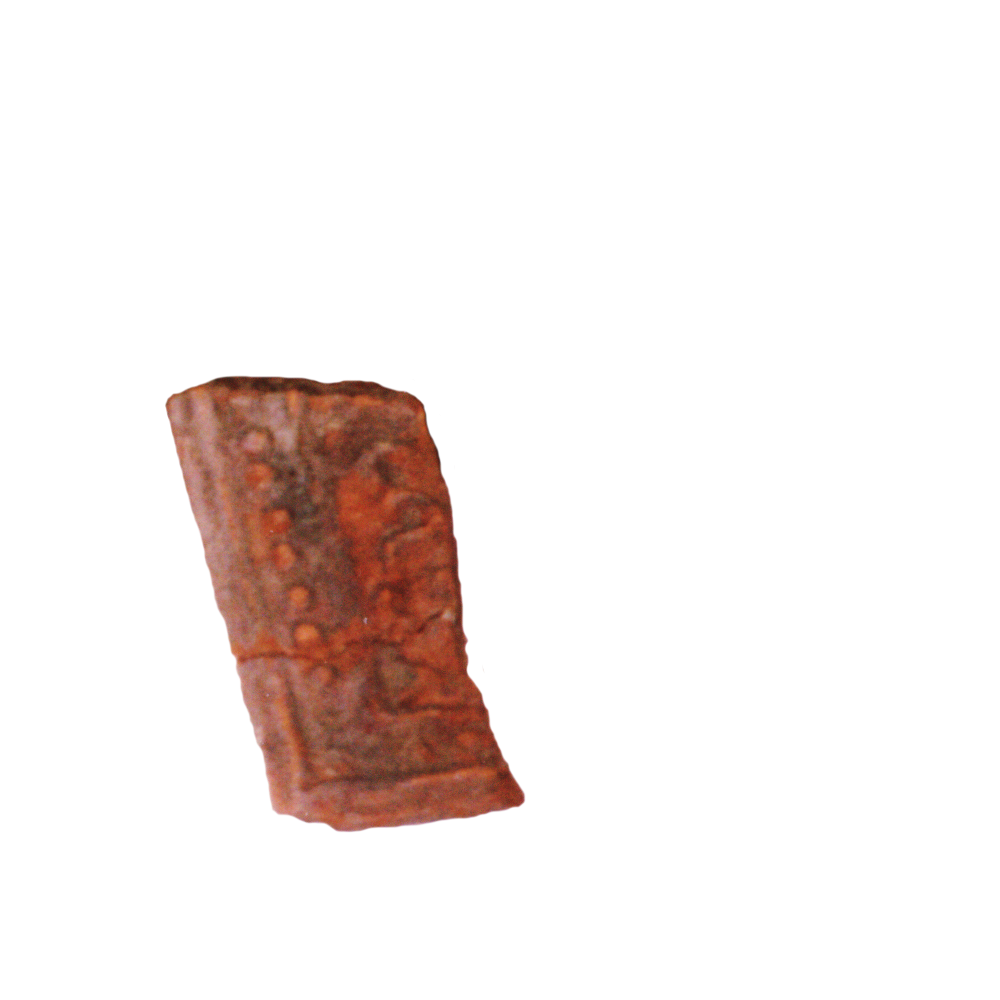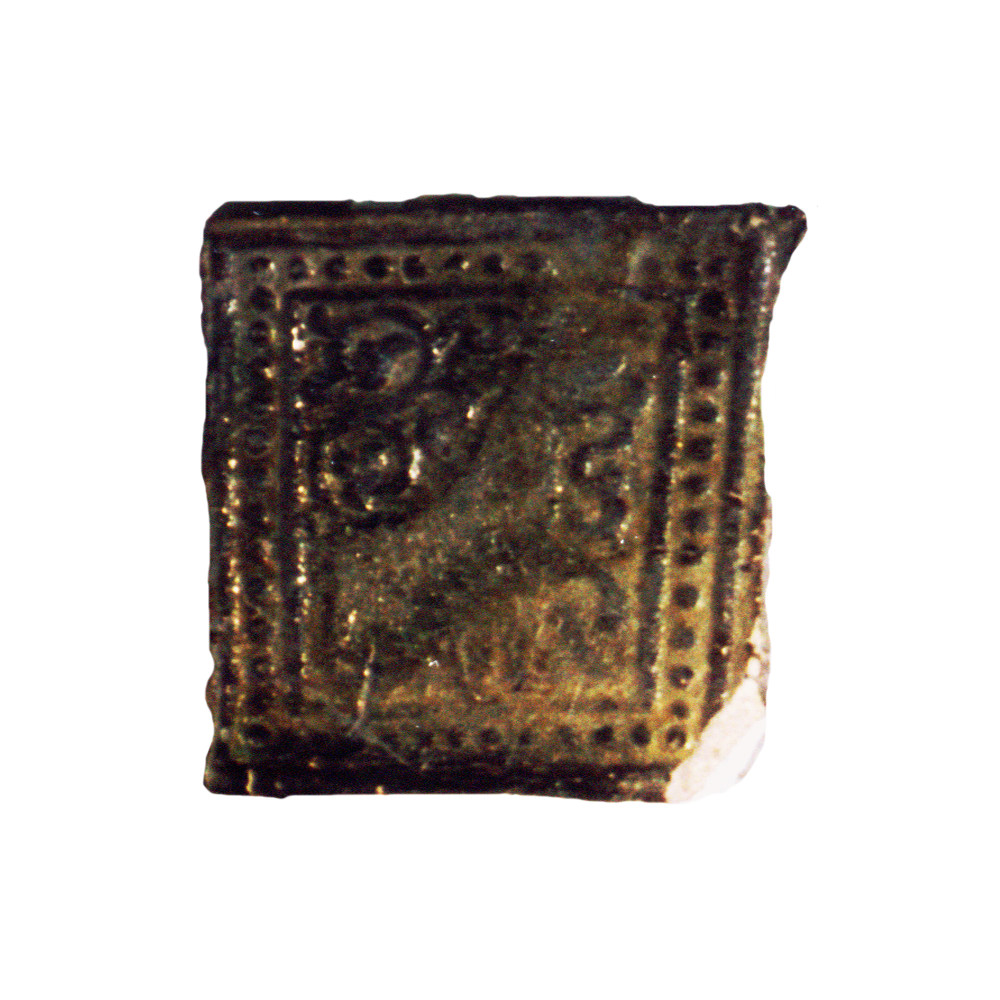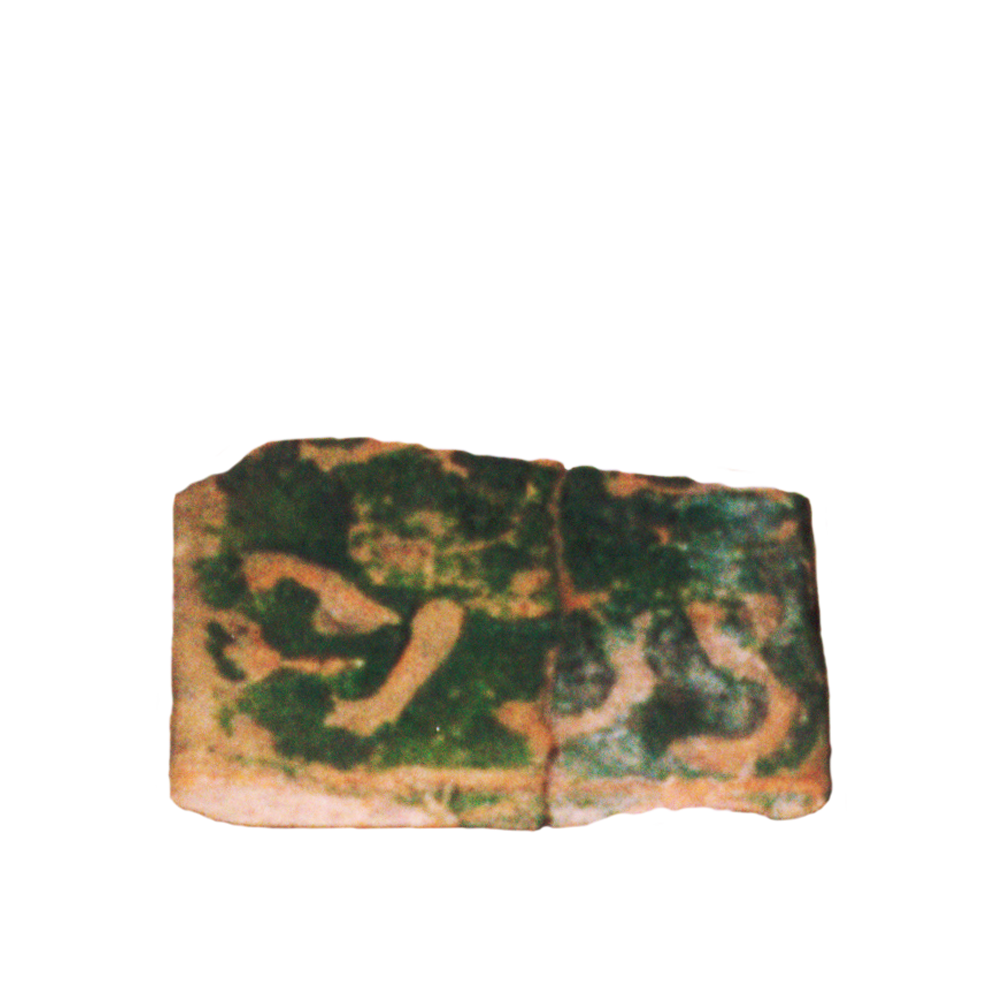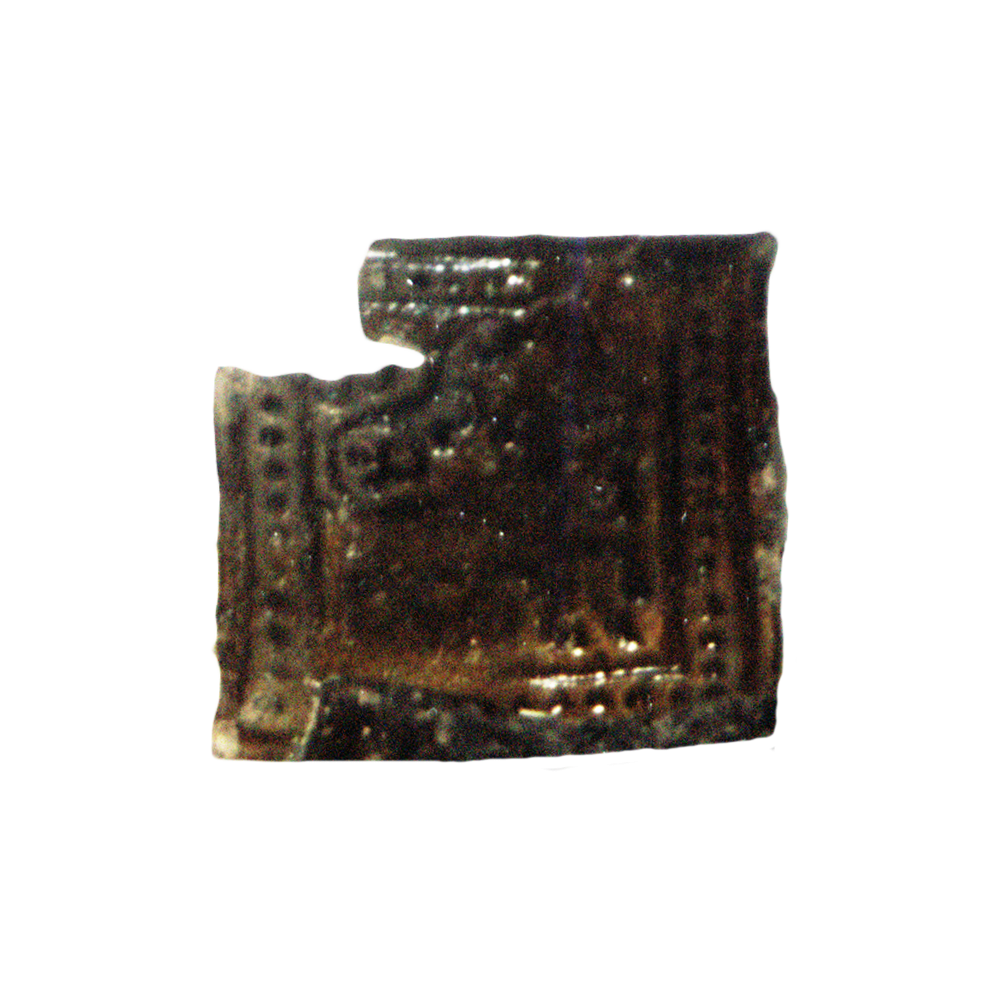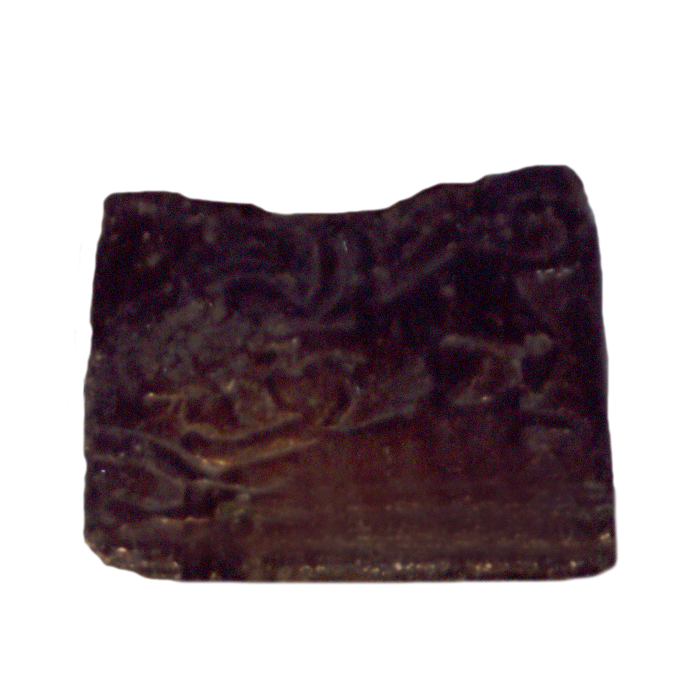202 tiles bear a moulded relief decoration, consisting of central pattern and frame. These tiles can be divided into two groups according to the main motif: vegetal and zoomorphic. Only two rectangular tiles bear an epigraphic band with auspicious formulae in Kufic.
72 tiles belong to the vegetal group. The most represented shape is the hexagon, especially the regular hexagon, the most spread colours are green and red, followed by yellow. The most common vegetal pattern is composed by a central geometric element (triangle, lozenge, square) with buds, leaves, or palmettes sprouting from its sides and tips. A more complex variant of this pattern is specific of the octagonal tiles, which are the largest of the whole corpus. The rosette and the vegetal scroll motifs are much less represented.
Zoomorphic motifs are to be found in 99 tiles. The most common shape is the square, the most spread colours are yellow and green, followed by red. A quadruped is depicted on the majority of tiles: gazelle/wild goat, antelope, felid/lion, hare. Five tiles are characterised by unicorns/caprids or peacocks heraldically facing each other. The less represented motifs are the zoomachia scene, a fabulous animal, a two-headed eagle, and a horse carrying a rider.
The frame types, variously combined with the central pattern, are: beaded frame or vegetal scrolls enclosed by a double fillet; single fillet; multiple concentric or overlapping fillets.
The decorated tiles were manufactured and used from the late 12th to the early 13th century.
